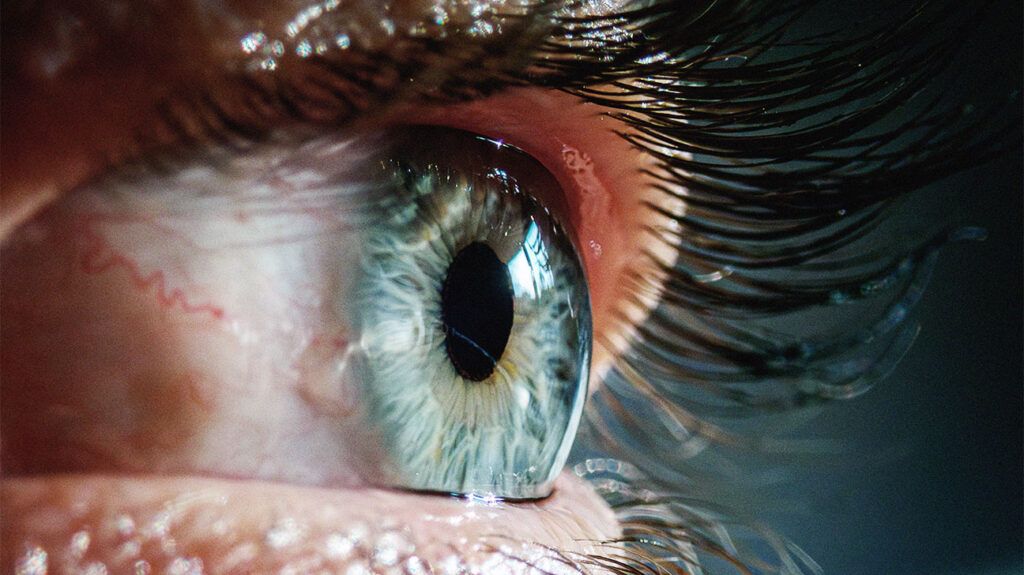Ocular tuberculosis is an eye infection caused by the same bacteria that cause tuberculosis (TB) in the lungs. Treatment usually involves a 6-month course of antibiotics.
It can lead to vision loss, but early treatment is usually effective.
In this article, learn more about ocular TB, why it happens, and how doctors treat it.

Ocular TB is a
TB symptoms usually start in the lungs, but they can spread to other organs, including the eyes. TB that spreads in this way is called disseminated TB. TB that is outside the lungs is known as extrapulmonary TB.
Infection can also result from direct contact between the eyes and bacteria, for instance, in saliva droplets. Sometimes, infection may only affect the eyes and not the lungs or other parts of the body.
According to one study,
Of those who develop pulmonary TB symptoms, very few have ocular TB.
Ocular TB infection causes inflammation, which appears as nodules or tubercles on the eye.
These tubercles are only visible under a microscope, but inflammation can lead to symptoms such as:
- blurred vision
- light sensitivity
- floaters or flashes in the eye
- headache
- yellowish-white lesions visible in eye tests
Ocular TB can affect any part of the eye.
If the infection results from direct contact with the bacteria, symptoms may affect the following:
- eyelids
- tear ducts
- cornea, the covering at the front of the eye
- the conjunctiva, the transparent membrane that protects the eye
- adnexa, the part of the eye that surrounds the eyeball
An infection that spreads from the lungs is more likely to affect the uveal tract, which includes:
- the iris
- the ciliary body, which is behind the iris and includes the muscle that shapes the lens
- the choroid, part of the layer that forms the wall of the eye, between the sclera, or white of the eye, and the retina, at the back
Doctors call this TB uveitis.
Learn more about the structure of the eye.
Ocular TB can develop in people with active TB, a history of TB, or risk factors for a TB infection.
It can:
- start in the lungs but cause eye symptoms if the bacteria spread
- affect the eyes due to direct contact with the bacteria
- affect a person with no other signs of TB
Risk factors for developing ocular TB include:
- having pulmonary TB or a history of TB
- living in a place where TB is more likely
- having risk factors for TB,
such as :
What are the stages and progression of TB?
Doctors can find it challenging to diagnose ocular TB because:
- the symptoms can resemble those of other eye infections
- test results are
not always accurate - there is still much that scientists do not understand about the link between pulmonary and ocular TB
Tests that may help with diagnosis include:
- a tuberculosis skin test, although it may show a false positive following a BCG vaccine
- a chest X-ray to look for signs of pulmonary TB, but not everyone with eye symptoms has lung involvement
- a fine-needle biopsy, but this can be risky, and results can take up to
10 weeks to develop - sampling anterior chamber fluid or vitreous humor and applying a PCR test, which is faster with more accurate results
- doing
tests to exclude other infections, such as syphilis and sarcoidosis
There is no definitive way to diagnose ocular TB, but a doctor may diagnose “assumed TB” based on these results.
Researchers note that TB and ocular TB can present differently. Scientists are working to identify the types and how they affect a person, which could lead to a more accurate diagnosis and more targeted treatment.
Learn about the different types of TB.
Treatment for ocular TB is usually the same as for lung or pulmonary TB.
The
If symptoms do not resolve by 6 months, a doctor may extend treatment for another 3 to 6 months. This may happen if symptoms improve slowly or are severe when treatment begins.
The person will also take corticosteroids to minimize the risk of damage due to inflammation.
If the infection does not respond within 3 to 4 weeks, the person may have drug-resistant TB. In this case, a doctor will work with other specialists on a treatment plan.
By the end of treatment, a person should have clear vision.
Learn more about antibiotic resistance.
Early treatment for eye TB is
However, without treatment, there is a risk of permanent damage and possibly vision loss.
Learn more about the outlook for untreated TB.
Here are some questions people often ask about ocular tuberculosis.
What are the symptoms of ocular tuberculosis?
Ocular TB can lead to blurred vision, light sensitivity, eye floater or flashes, and headache.
Is TB in the eye curable?
Early treatment for eye TB will usually clear up the symptoms, leaving little damage. A standard course of treatment lasts
Is tuberculosis curable?
As with ocular TB, a
Ocular tuberculosis can develop if TB bacteria spread from the lungs to the eyes or if the bacteria comes into direct contact with the eyes. Sometimes, it happens without having pulmonary TB.
Treatment for ocular TB is the same as for pulmonary TB. Early treatment can resolve ocular TB and reverse most of the damage.
